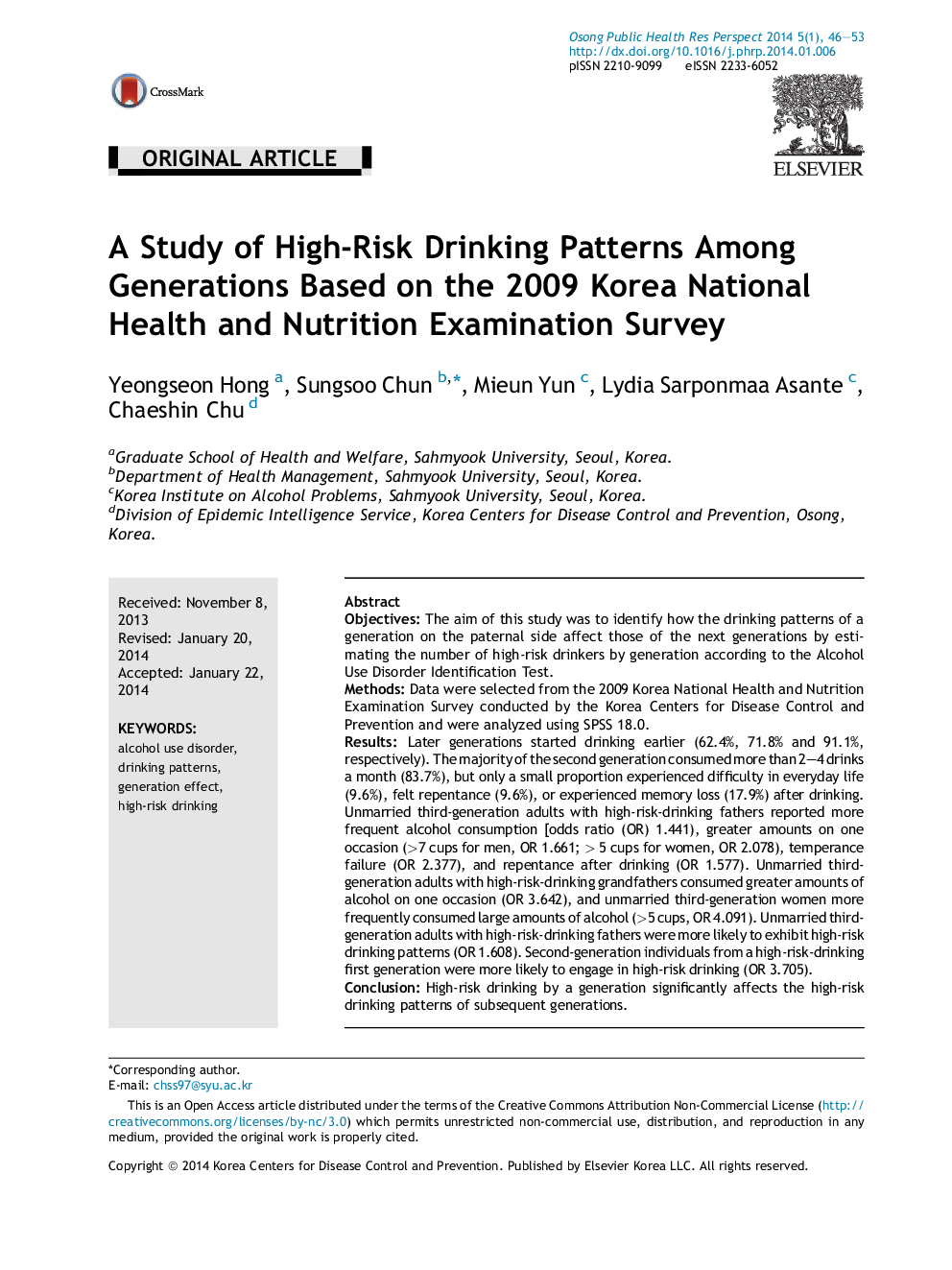| Article ID | Journal | Published Year | Pages | File Type |
|---|---|---|---|---|
| 4201968 | Osong Public Health and Research Perspectives | 2014 | 8 Pages |
ObjectivesThe aim of this study was to identify how the drinking patterns of a generation on the paternal side affect those of the next generations by estimating the number of high-risk drinkers by generation according to the Alcohol Use Disorder Identification Test.MethodsData were selected from the 2009 Korea National Health and Nutrition Examination Survey conducted by the Korea Centers for Disease Control and Prevention and were analyzed using SPSS 18.0.ResultsLater generations started drinking earlier (62.4%, 71.8% and 91.1%, respectively). The majority of the second generation consumed more than 2–4 drinks a month (83.7%), but only a small proportion experienced difficulty in everyday life (9.6%), felt repentance (9.6%), or experienced memory loss (17.9%) after drinking. Unmarried third-generation adults with high-risk-drinking fathers reported more frequent alcohol consumption [odds ratio (OR) 1.441), greater amounts on one occasion (>7 cups for men, OR 1.661; > 5 cups for women, OR 2.078), temperance failure (OR 2.377), and repentance after drinking (OR 1.577). Unmarried third-generation adults with high-risk-drinking grandfathers consumed greater amounts of alcohol on one occasion (OR 3.642), and unmarried third-generation women more frequently consumed large amounts of alcohol (>5 cups, OR 4.091). Unmarried third-generation adults with high-risk-drinking fathers were more likely to exhibit high-risk drinking patterns (OR 1.608). Second-generation individuals from a high-risk-drinking first generation were more likely to engage in high-risk drinking (OR 3.705).ConclusionHigh-risk drinking by a generation significantly affects the high-risk drinking patterns of subsequent generations.
